Here is another page of
color photos of World War II. I'm not 100% sure of all the pictures on this page, but I believe they all date from World War II.
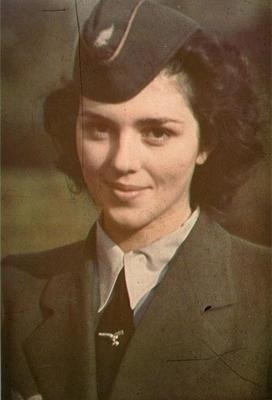 |
| A Luftwaffenhelferin (air force helper). |
My theory is that colorized photos are perfectly acceptable to learn about World War II. You should assume that all of the photos on this page have colorized unless otherwise indicated (the Margaret Bourke-Wright studio portrait is the only one I am sure was taken in original Kodachrome).
 |
| A Finnish Junkers K 43fa. February 1942. This was the military version of the Junkers W43. While the K43/W43 is not a very well known plane from the 1920s, the Luftwaffe used these throughout World War II as trainers and transports. The Finns only had five of these at the start of the Winter War and used them for reconnaissance flights. In the Continuation War they transported 1600 wounded (they acquired five more K 43s in 1944). The K43 could fly high (40,000 feet/12,700 m) and, as shown, worked well in snow with skis (though they could work on the camouflage on this one). Numerous foreign air forces bought the W43, too. One of the lessons of World War II is that the first thing you want from equipment is reliability and durability - high performance is a little further down on the list of requirements. Many older planes fit the bill. |
I like to provide a variety of images on these pages. It is my opinion that you notice more in images if they are not repetitive. That is, if you see photo after photo of just fighter planes, your mind is prone to wander. However, if you don't know what type of photo is coming next, you notice more and appreciate the image more. So, while this page focuses primarily on Axis planes, it also provides regular breaks.
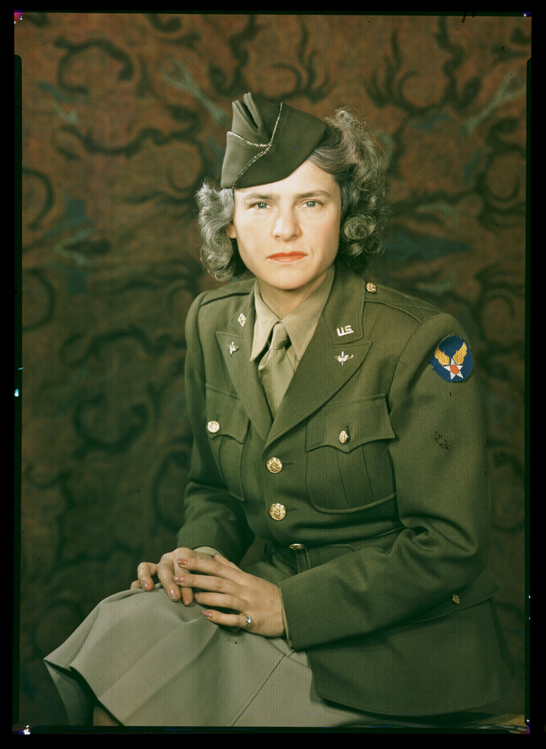 |
| Famed wartime photographer Margaret Bourke White, c. 1943. Unlike most of the other photos on this page, this is not colorized - it is original Kodachrome by John Cyril Alfred Redhead (National Media Museum Collection / SSPL). |
When assembling collections of color photos of World War II, inevitably you lean toward the Axis side. This is because there is more interest in the lost Axis cause, and thus more photos of that side have been colorized.
 |
| A Bf 109 E7 Jagdgeschwader 27 (1) being used in support of the Afrika Korps. These used the Daimler Benz DB601A engine and were front-line fighters in 1940-41, the F version coming along in the spring of 1941. |
The more you get into this, the more you realize that there simply is greater interest in some areas of the war than others, and there's no point to fighting it. People are interested in what they are interested in, and there's nothing wrong with that.
 |
| Captain Edwin Fisher of the 362nd FG atop his P-47D Thunderbolt 42-26919 “Shirley Jane III.” |
You may find more color photos of World War II on
page 1 and
page 2 and
page 3 and
page 4 and
page 5 and
page 6 and
page 7 and
page 8 and
page 9 and
page 10 and
page 11 and
page 12 and
page 13 and
page 14 and
page 15 and
page 16 of this series.
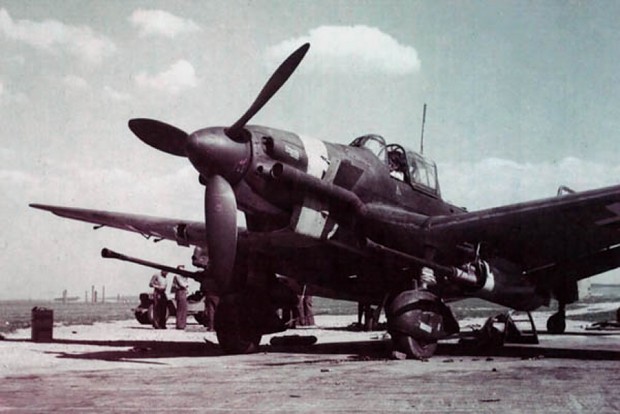 |
| A couple of rare pictures of a Junkers Ju-87G, the "tank buster" configuration. It has two 37 mm (1.46 in) Bordkanone BK 3,7 cannons under the wings. Hans-Ulrich Rudel used the first of these on the first day of the Battle of Kursk. They were quite effective, but also quite easy to shoot down. This Stuka apparently was captured by US forces in Czechoslovakia after the pilot flew west to avoid the Russians. |
Anyway, I hope you enjoy the page as much as I did putting it together!
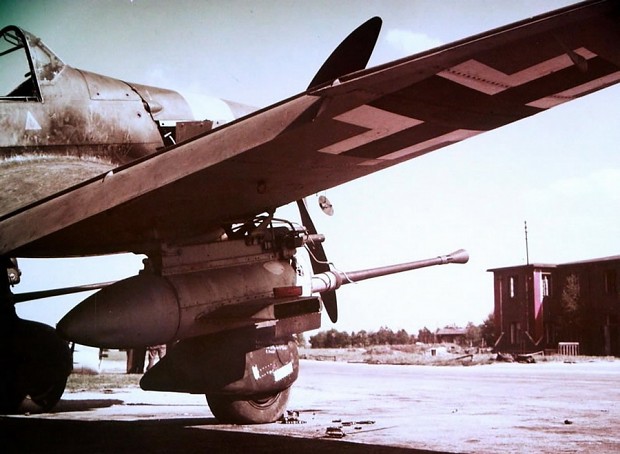 |
| Another picture of the Stuka with tank buster armament. |
 |
| An unidentified Afrika Korp Luftwaffe medical officer (can you spot the medical symbol?) with the rank of Oberleutnant (1st Lieutenant) whiling away some time with cards. This was in "Balkenkreuz Über Wüstensand: Falbbirderwerk des Deutschen Afrikakorps" (The Balkan Cross over the Desert Sands: Color Photos from the Afrika Korps), a 1943 book by Gerhard Stalling. Note the Iron Cross Second Class ribbon - this guy has seen some action. |
 |
| A Fiat G.55 Centauro (Italian: "Centaur"). The Fiat G.55 was one of the great designs of World War II, part of the "third wave" of Italian warplanes during the conflict. The Luftwaffe, which was not especially complimentary of foreign aircraft, tested the Fiat G.55 against the Messerschmitt Bf 109G and the Focke-Wulf 190 and decided it was "the best Axis fighter." The 274 built during the war served with the Repubblica Sociale Italiana and performed well. |
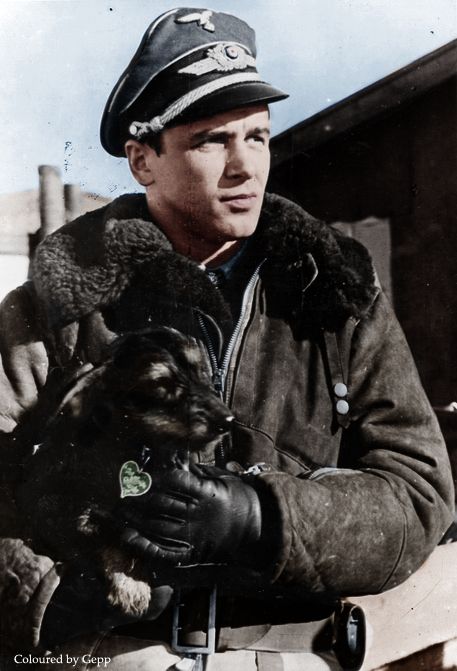 |
| Luftwaffe Major Hans Philipp. He had more than 206 aerial victories and was a recipient of Knight’s Cross with Oak Leaves and Swords. He was the leading ace in the war in mid-1943. KIA 8 October 1943 when his parachute failed to open. |
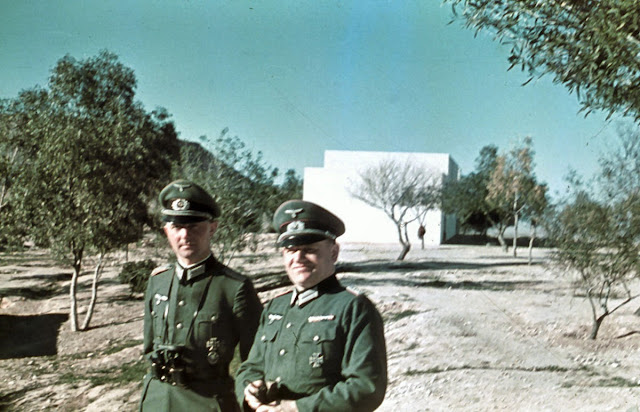 |
| This doesn't seem like much of a photo - but it was taken by everyone's favorite Wehrmacht officer, General Erwin Rommel. The story goes that, when Hitler gave him the assignment to lead the Afrika Korps, Joseph Goebbels thrust a Leica camera in his hands and said, "You might see something interesting." Here we see two unidentified German Artillery Officers in North Africa, still wearing their Continental uniform. (US National Archives). |
 |
| Hauptmann Franz Von Werra and his pet lion cub Simba. Von Werra was the only Axis POW to escape Canadian custody in 1940. He hopped a train and somehow got across the St. Lawrence Seaway in the middle of winter. Then, he hung around New York City openly before heading south and crossing over to Africa. Von Werra was portrayed in the film 'The One that Got Away' by Hardy Kruger. |
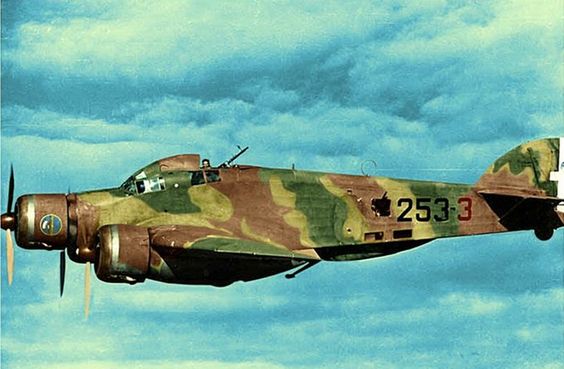 |
| Italian Savoia Marchetti SM.79 Sparviero (Sparrowhawk) of the 253 Squadriglia. Nicknamed "il gobbo maledetto" ("damned hunchback"), the Sparrowhawk was built in large numbers (for Italy), and the 600 or so in operation at the beginning of the war (1300 total built for war use) served as transports, then later as torpedo bombers. Clever engineers even turned some into drones, though they did not see service as drones. One of World War II's underrated aircraft. |
 |
| General Rommel consulting a map with his air support commander, Generalmajor Stefan Fröhlich. This photo was first published in the 1943 book ""Balkenkreuz Über Wüstensand: Falbbirderwerk des Deutschen Afrikakorps" (The Balkan Cross over the Desert Sands: Color Photos from the Afrika Korps) by Gerhard Stalling. |
 |
| Luftwaffe Junkers Ju-87 Stukas from the 7th squadron, 1st group during the early stage of Operation Barbarossa, summer 1941. |
 |
| Battleship Bismarck after the Battle of the Denmark Strait. She was flooded forward and is down at the head by about two meters. Still able to do 28 knots, though. Taken from the Prinz Eugen. |
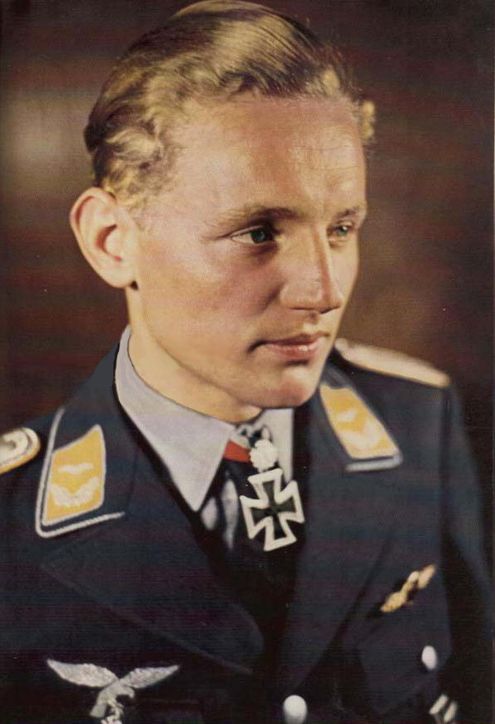 |
| Erich "Bubi" Hartmann. The Soviets called him "The Black Devil." Quite simply, Hartmann is the best whoever was as far as fighter pilots go. He downed over 350 enemy aircraft. He passed away peacefully in 1993, unlike his hundreds of victims. |
 |
| General Rommel snuck up on this poor guard in North Africa and took his picture. If the guy saw that, he probably would have freaked and figured he was headed for the brig for some reason. |
 |
| Mitsubishi J2M Raiden ("Thunderbolt"). To the Allies, this was "Jack." This is another design by vaunted designer Jiro Horikoshi, who was the subject of Hayao Miyazaki's controversial animated feature film "The Wind Rises" (2013). Engine problems and coming along too late in the conflict made it less successful than Horikoshi's more famous design - the A6M Zero. |
 |
| A Junior Sergeant Medical Service lady in the Red Army, Sofia, Bulgaria, March 1945. "Oh Doc, I hurt real bad, right here." |
 |
| A Mitsubishi A6M5 Zero, takes off from the aircraft carrier Junyo on June 19, 1944. That was the first day of the Battle of the Philippine Sea, and everyone is excited. While the battle did not go particularly well for the Japanese, at least the Junyo didn't sink during the battle like the Shōkaku and Taihō. |























No comments:
Post a Comment